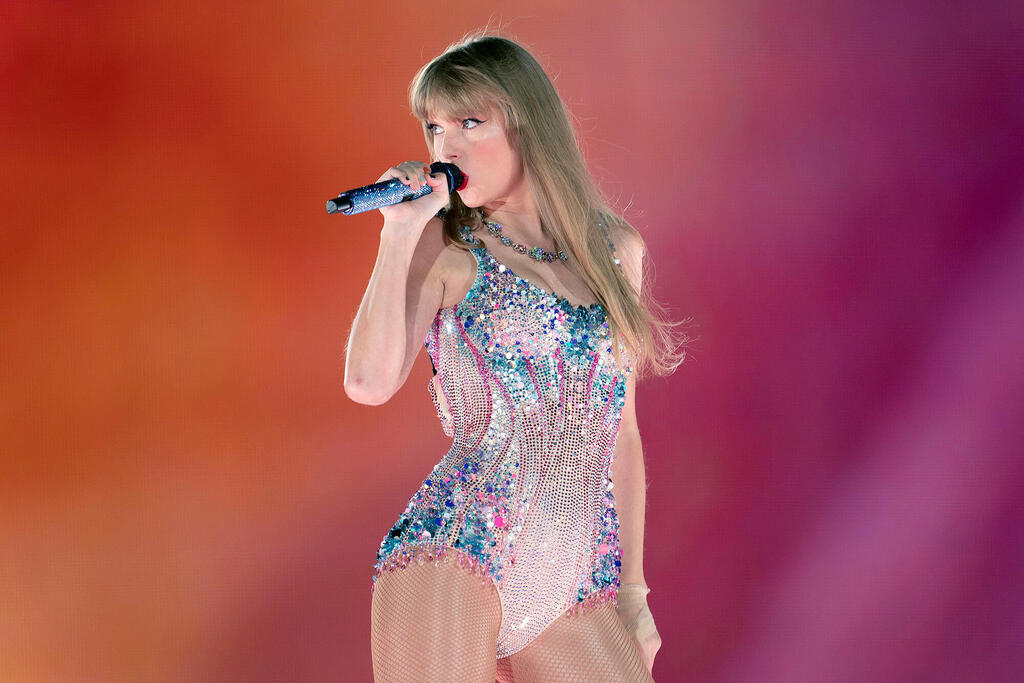
Analysis
Facing the music: Streaming benefits mega stars like Taylor Swift, but squashes all other musicians
The mid-year data from the Recording Industry Association of America (RIAA) reveals that 2023 is going to be the third year in a row of record breaking revenue in the music industry. However, the main beneficiaries of the streaming royalties are the major labels, and most of the artists are forced to seek a living in live performances
This is going to be the year of the global music industry. According to the mid-year data published by the Recording Industry Association of America (RIAA), the year 2023 continues the trend of the last three years, in which the music industry broke revenue records again and again. And who contributed to this? The streaming services that saved the established industry that was on the verge of death. But while the money is flowing, most of it ends up in very few pockets - mainly those of the major labels and the super-successful artists. The small, medium and almost big artists have to make do with small incomes and grueling live performances to make a living. And lurking just around the corner, artificial intelligence threatens to harm their income even more as even the proposed solutions are likely to end up mainly benefiting the biggest players.
1999 looked like the beginning of the end for the established music industry, which was one of the most important forces in shaping popular culture throughout most of the 20th century but faced a new type of threat towards the end of the millennium: the file sharing service Napster, which allowed anyone to locate any song or album they wanted and download it from the Internet for free.
No one would pay any more to hear music, that was the prevailing assumption back then. Indeed, the following years indicated that it was over. According to the data of the International Federation of the Phonographic Industry (IFPI), from a record revenue of $22.3 billion in 1999, the music industry began to record a steady dive from year to year. The launch of Apple's iTunes Store in 2003, one of the first successful services that allowed fans to legally purchase digital music (for 99 cents per song), at best slowed the decline (and, in any case, never provided more revenue than physical sales). In 2014, the industry reached a low point with revenues of $13.1 billion, with digital sales managing to only partially offset the decline in physical sales. More people than ever listened to music, they just chose to do so through free file sharing services that did not generate revenue for the industry or the artists. The industry fell into a severe crisis, and the artists, except for the most successful, who once made a good living from CD sales, had to start shuffling between shows and selling T-shirts and other products to fans.
A year later, in 2015, the trend had already changed. Spotify's streaming service, which launched in 2008 and arrived in the U.S. in 2011, entered the cultural mainstream. Apple, which was the first to make good money from digital music, also joined in with Apple Music, which launched the same year, and the penetration of streaming services gained momentum. In 2015, for the first time in a decade and a half, the music industry registered noticeable growth with revenues of $13.6 billion, and the following years showed that this was not an anomaly but a change of direction.
In 2021, during the height of the pandemic and the increased consumption of media of all kinds, the record of 1999 was broken with revenues of $24 billion (65.4% coming from streaming). In 2022, the record was broken again with revenues of $26.2 billion (66.8% from streaming). And data published by the RIAA, which represents all the major music companies and distributors in the U.S., show that the momentum has not yet reached its peak.
In the first half of 2023, the U.S. music industry recorded an all-time high for the mid-year point, with retail revenues (revenues from sources where listeners pay for music such as paid streaming services or physical purchases) reaching $8.4 billion, up 10.5%. Wholesale revenues (from sources in which listeners do not pay for music, for example advertisements that are shown on free services such as YouTube) rose by 8.2% to an amount of $5.3 billion.
The 95.8 million paid streaming service subscribers are responsible for 84% of the industry's revenue (an increase of 6.4% compared to the first half of 2022), and the total revenue from these services was $7 billion, an increase of 9.4%. At the same time, the revenues from the sale of digital music decreased by 11.8% to an amount of only $225 million. But revenues from physical sales rose 5% to $882 million, 71.7% of which came from record sales.
But the RIAA's pretty numbers don't tell the full picture. Because even though the pie is growing, the share of the artists and creators in it is tiny. According to estimates, artists receive 10% to 16% of royalties, while labels can rake in 50% to 90% of royalties. According to a survey conducted by the website Two Story Melody in 2022, the average income of creators from music stands at $12,200 per year, a figure that is probably distorted by some extreme figures from particularly popular artists since the median income is only $1,000 per year. 56.2% of creators registered income of less than $1,000, and another 19.2% income of between $1,000 and $5,000 per year. And these figures also include income not from music sales, for example from concerts (the most significant source of income), music lessons (about 10% of income), merchandising, crowdfunding, and more. The streaming services are only responsible for 21.9% of the artists' income.
Ostensibly, streaming services were supposed to free the creators from the shackles of the music companies, give them the independence to directly reach every listener in the world and generate income directly without requiring the mediation of the companies (who love to argue that they take all the risk involved in investing in album recording, processing, distribution and marketing). But it is the streaming services that are responsible for the artists' situation. Spotify pays royalties that range, according to estimates, from $0.003 to $0.005 for streaming a song. That is, in the pessimistic scenario, in order to reach royalties of one dollar, a song must be played more than 333 times, and even this dollar does not go entirely to the artist, but is shared with the label, the personal manager, the agent and other parties.
In this situation, only two parties can register significant revenues from streaming: the music companies, which concentrate a large number of artists and draw royalties on hundreds of millions or even billions of plays, and huge artists like Taylor Swift, whose every song becomes an instant mega-hit with hundreds of millions of streams. And even she, apparently, records more significant income from her super-successful concert tour. Even an artist who registers decent success, say one whose songs get 10 million plays a year, will receive only $30,000 in income from the streaming services.
Apart from that, artists, as well as music companies, suffer from the "functional music" phenomenon, white noise music such as the sounds of rain, sea waves or other soothing sounds designed to help people fall asleep. This music, as far as it can be called music, is often produced by artificial intelligence tools and is gaining a significant share of hearing. On Spotify, for example, white noise podcasts accumulate up to 3 million hours of listening per day.
This volume of listening also hurts the income of the studios because the royalties that Spotify pays per listen are a derivative of a certain share of the subscription fee that the company collects in a certain period divided by the number of listens in that period. If a significant portion of the listening is of tracks created by AI tools, it means that there is less money for royalties for real artists.
Now the industry is trying to find a solution to this problem as well. The French streaming service Deezer recently signed an agreement with Universal Music Group (UMG), the largest music company in the world, in which the service will implement a new model defined as "artist-oriented". Deezer will pay no royalties for functional music, while artists whose songs have been streamed at least 1,000 times per month by at least 500 listeners will receive double royalties. Songs streamed following a specific search of an artist's name will also receive double the royalties. In the future, Deezer intends to replace the functional music with its own versions, for which royalties will not be paid. "We effectively remove the incentive to monetize any content on our platform that isn't music created by artists and that attracts a regular and engaged listener base," Deezer explained.
However, Universal's involvement in this process, and the clear prioritization of renowned artists, raises the question of who exactly will be the main beneficiary of the new model.
First published: 13:58, 21.09.23














